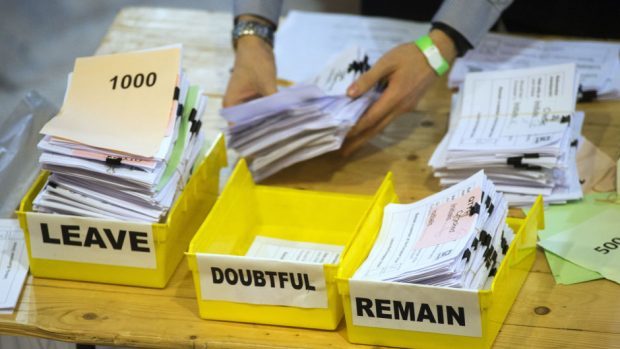There were fears as polling got underway on Thursday that torrential storms and subsequent flooding in London and the south-east would dampen voter turnout in the referendum.
Some stations did have to close and others opened late, but there were contingency plans in place.
Electoral Commission sources at the national count in Manchester reported it had been “brisk and busy” at polling stations throughout the day.
And as the counting got going, they seemed relaxed the rain hadn’t got in the way.
Apathy among would-be Remain voters was also touted as a reason for Leave’s victory.
With the pendulum swinging towards Brexit as more areas declared, the SNP faced accusations from Labour they had failed to get their supporters out.
The former’s Westminster Leader Angus Robertson rejected the claims immediately, pointing to Labour’s near-wipe-out in Scotland at the general election.
And in the end the figures in the north of England – supposed Labour heartlands – spoke for themselves with a groundswell of support for Brexit.
Overall turnout in Scotland (67.2%) was lower than across the UK (72.2%), particularly in Glasgow (56.2%).
The Scottish figure is significantly lower than for the 2014 independence referendum (84.59%), but higher than at last month’s Scottish Parliament election (55.6%).
Some suggested there could have been an element of voter fatigue north of the border.
But given every area in Scotland backed Remain – albeit more than one million people voted for Brexit – it’s difficult to suggest that’s where the result was lost.
At most, there was some containment of the Remain vote.
If there were reluctant Remainers, it’s more likely they were in England and Wales, which both delivered a strong vote for Brexit.
That said, the most obvious explanation is Leave’s consistently above-average turn-outs in their strongest areas.
